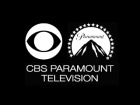KTF/Language/Dialects
Klingon Task Force Main Page

| |||||
Variations of tlhIngan Holby Deanna Rose Bressie Klingons are a proud race, descended of great warriors and heroes. While the Klingon race is as diverse as Humanity and not every Klingon is a warrior, that strong warrior heritage runs in every Klingon’s veins. This axiom holds true for the Klingon language. From no’ Hol (“ancestor’s language”) to ta’ tlhIngan Hol (“the Emperor’s Klingon”), the way Klingons have spoken since the beginning of their history has been as strong and as diverse as the Klingons themselves. no’ Hol, or the ancestor’s language, is believed to be the original Klingon language dialect. It’s said that this is the dialect used during the time of Khaless. While it is not in popular use, it is far from obsolete. Klingon myths we originally told, then written down, in no’ Hol. While some of these myths were translated into modern tlhIngan Hol, many of the lines from these stories are far more recognizable in no’ Hol. A great deal of Klingon music is sung in no’ Hol, particularly opera and folk songs. The majority of, if not all, Klingon rites and rituals are performed in no’ Hol. These are studied meticulously and performed by rote memorization, as ad libbing is considered an insult in these cases. The regional variations of tlhIngan Hol vary greatly depending on a number of factors. Geographical separators such as mountains and rivers may have separated two Sep, or regions. This would mean that people of the two Sep had little contact with each and therefore had little influence on each others’ languages. In areas where two Sep were bordering each other, there may be several vengHom, or villages, where the people of the two Sep have intermingled-both culturally and linguistically, creating a whole new dialect. Then there are the dialects spoken away from Qo’nos, the Homeworld. On planets that have been integrated into the Klingon Empire you would find numerous versions of tlhIngan Hol. On some planets, the native language survive side-by-side with the Klingon language, while on others, tlhIngan Hol has completely replaced the native language. As varied as outlying planets in the Empire are, so are the variations of tlhIngan Hol. Then there is ta’ tlhIngan Hol, “the Emperor’s Klingon”, or just simply known as ta’ Hol. While the Empire has not had an emperor in many generations, this term is still used for the ruler’s dialect. This is not just one dialect, but the current ruler’s dialect. As leadership changes, it is inevitable that the new ruler will be from a different lineage and Sep than the previous leader. They may speak the same dialect, or one completely different. However, when a new ruler is instated, their dialect becomes the new ta’ Hol. To not speak the current ruler’s dialect is to be uncultured and uncouth. It is for this reason many Klingons learn multiple dialects of tlhIngan Hol. When one chooses to learn the Klingon language, they may spend years attending school learning grammar and vocabulary. This will only give them a very basic knowledge of tlhIngan Hol and will not prepare them for conversing with native speakers throughout the Empire. The multiple dialects spoken throughout the Empire may or may not follow the grammatical rules of ta’ Hol, and the wrong inflection may mean dishonor or death. A student of tlhIngan Hol’s best defense may be the word jIyajbe’-I don’t understand! Sources
|
|||||
